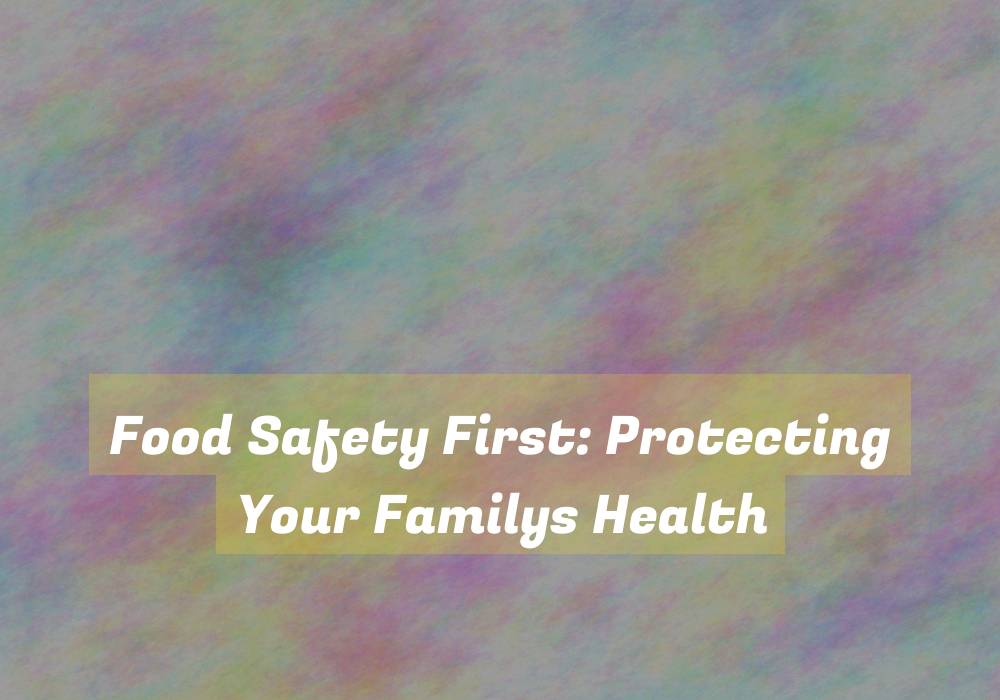Food Safety First: Protecting Your Family’s Health
Ensuring the safety of the food you consume is essential for the well-being of your family. By practicing good food safety habits, you can protect against foodborne illnesses and promote a healthy living environment. Here’s a guide to keeping food safety a top priority in your household:
1. Cleanliness is Key:
Wash Hands Thoroughly:
- Always wash hands before handling food, especially after using the restroom, handling pets, or engaging in activities that may contaminate hands.
Clean Cooking Surfaces:
- Regularly clean and sanitize kitchen countertops, cutting boards, and utensils to prevent cross-contamination.
Rinse Fruits and Vegetables:
- Wash fresh fruits and vegetables under running water, even if you plan to peel them.
2. Safe Food Handling Practices:
Separate Raw and Cooked Foods:
- Use separate cutting boards and utensils for raw meats and ready-to-eat foods to avoid cross-contamination.
- Use a food thermometer to ensure that meats and poultry reach safe internal temperatures to kill harmful bacteria.
Store Food Properly:
- Refrigerate perishable foods promptly to prevent the growth of bacteria.
- Follow storage guidelines to maintain the freshness and safety of leftovers.
3. Mindful Grocery Shopping:
Check Expiry Dates:
- Always check expiration dates on packaged foods before purchasing.
Inspect Fresh Produce:
- Choose fruits and vegetables that are free from bruises, cuts, or signs of spoilage.
Refrigerate Perishables Promptly:
- If grocery shopping includes perishable items, transport them home promptly and refrigerate as soon as possible.
4. Be Cautious with Leftovers:
Reheat Thoroughly:
- When reheating leftovers, ensure they reach a safe internal temperature to kill any potential bacteria.
Discard Uncertain Foods:
- If you’re unsure about the safety of a leftover or perishable item, it’s better to err on the side of caution and discard it.
5. Educate Family Members:
Teach Safe Food Practices:
- Educate all family members, including children, about the importance of food safety and proper hygiene.
Encourage Open Communication:
- Foster an environment where family members feel comfortable reporting any symptoms of foodborne illness promptly.
6. Stay Informed:
Monitor Food Recalls:
- Stay updated on food recalls and promptly check your pantry and refrigerator for any recalled items.
Follow Safe Cooking Guidelines:
- Stay informed about safe cooking practices, especially when handling raw meat, poultry, and seafood.
Seek Professional Advice:
- If you have specific concerns or questions about food safety, consult with a nutritionist or healthcare professional.
7. Plan and Organize:
- Plan meals to minimize the risk of food waste and ensure all perishable items are used in a timely manner.
Organize the Refrigerator:
- Keep the refrigerator well-organized, placing raw meats on lower shelves to prevent cross-contamination.
By prioritizing food safety practices, you contribute to the overall health and well-being of your family. Consistent adherence to these guidelines creates a safe and enjoyable environment for sharing meals together. Remember, it’s better to be proactive in preventing foodborne illnesses than dealing with their potential consequences.
